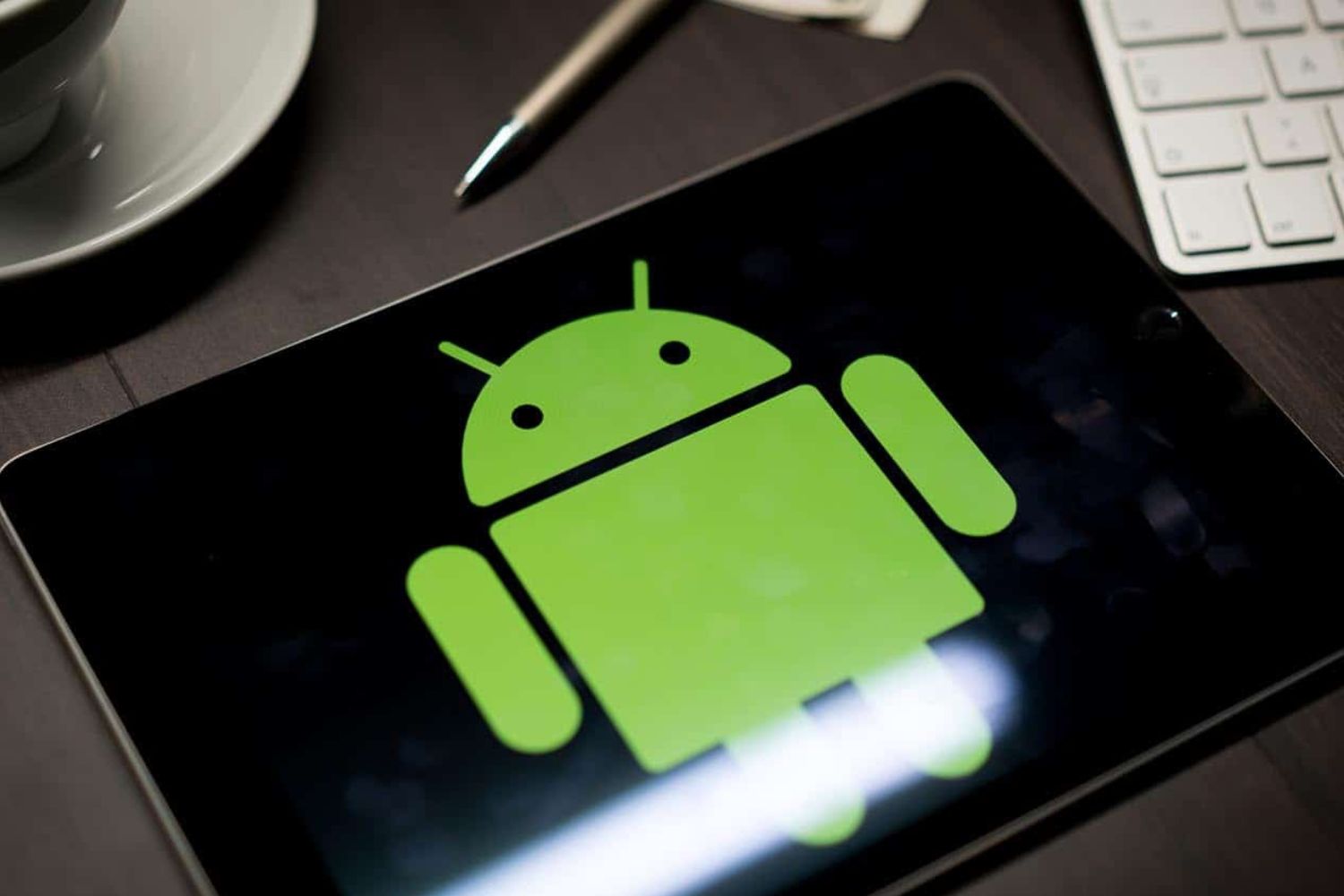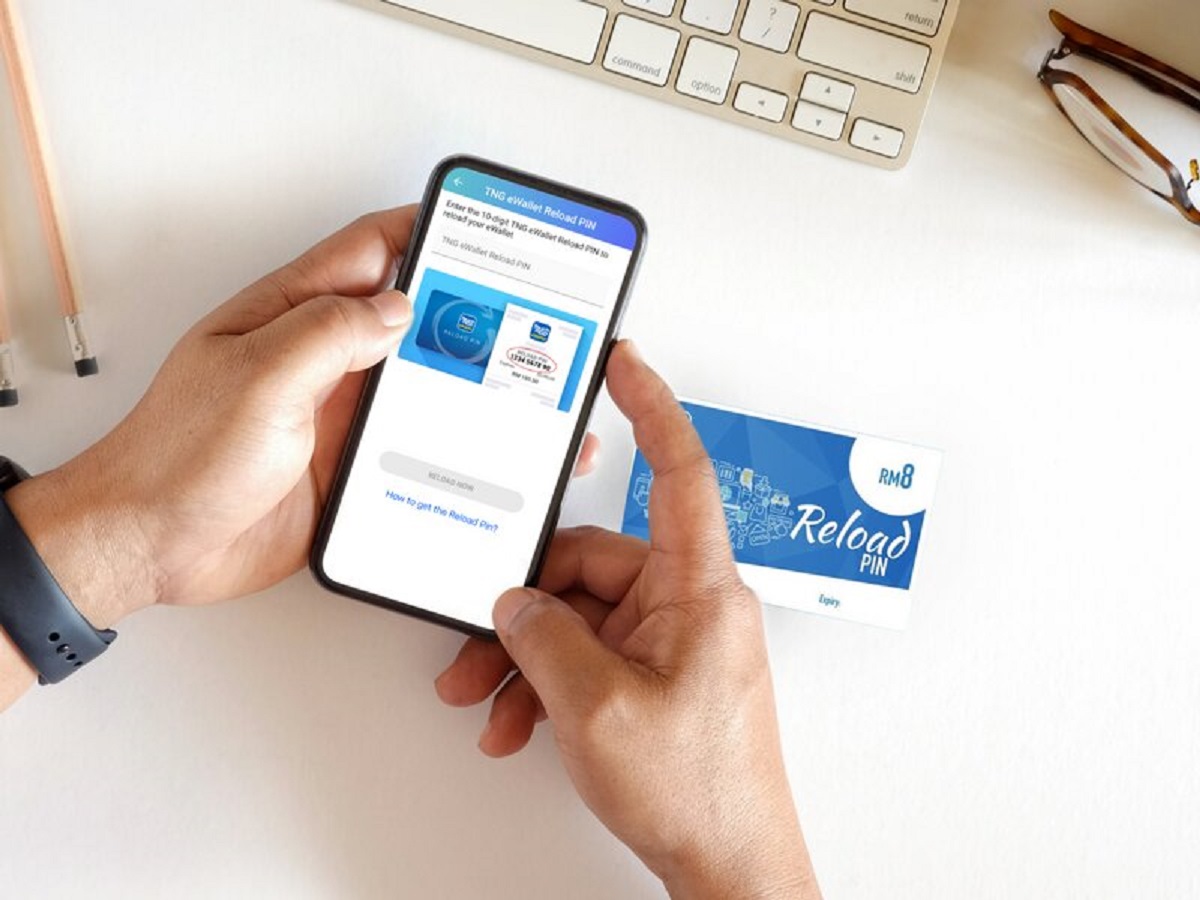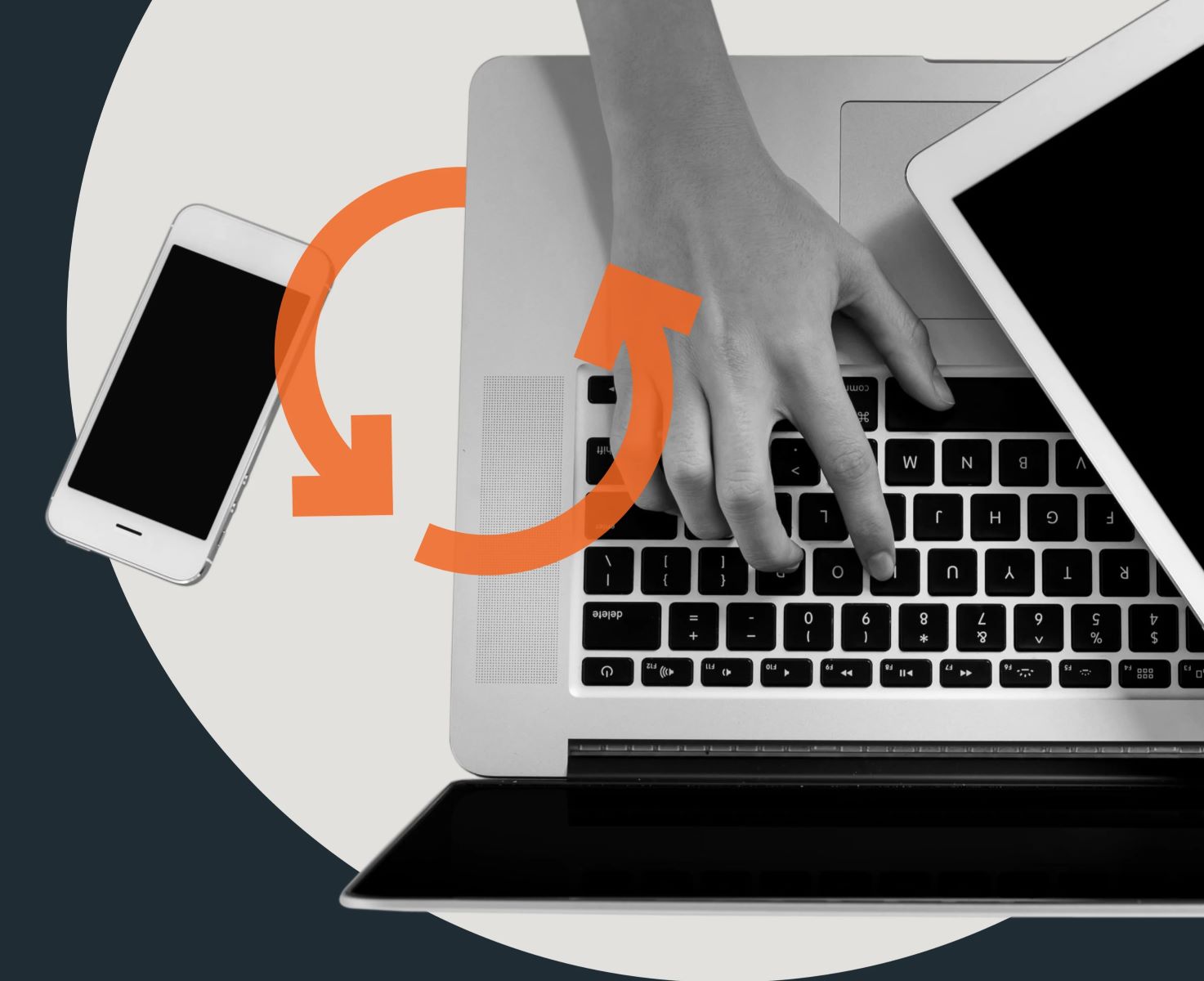Introduction
Reloading the Android operating system (OS) on your tablet can be a helpful solution for a variety of reasons. Whether your tablet is running slowly, experiencing software glitches, or you simply want a fresh start, reloading the Android OS can help restore your tablet to its optimal performance.
Android OS is an open-source operating system that powers millions of devices worldwide. Just like any other operating system, it requires regular updates to ensure that it operates smoothly and securely. While most devices receive automatic OS updates, it is possible for your tablet to face issues that require a manual reload of the OS.
In this guide, we will walk you through the step-by-step process of reloading the Android OS on your tablet. Before we begin, it is important to note that the process may vary slightly depending on the specific tablet model and Android version you are using. It’s always a good idea to consult your tablet’s manufacturer website or support forums for specific instructions.
Reloading the Android OS on your tablet can help resolve a wide range of issues. It can improve overall performance, fix software glitches, and eliminate any unwanted bloatware or unnecessary apps that may be slowing down your tablet. Additionally, if you are planning to sell or give away your tablet, reloading the Android OS ensures that all personal data is completely wiped and cannot be recovered.
Before we dive into the step-by-step guide, it’s important to emphasize the importance of backing up your data. Reloading the Android OS will erase all the data on your tablet, including apps, photos, videos, contacts, and other personal files. Therefore, it is crucial to create a backup of your important data to ensure you can restore it once the OS reload is complete.
Now that you have a better understanding of why you might want to reload the Android OS on your tablet, let’s move on to the pre-requisites and the step-by-step guide to help you navigate through the process.
Why would you want to reload the Android OS on your tablet?
There are several reasons why you might want to consider reloading the Android OS on your tablet. Here are some common scenarios where a reload can be beneficial:
1. Performance Issues: Over time, your tablet may start to slow down or become sluggish. This can happen due to a variety of reasons such as excessive app installations, background processes, or outdated software. Reloading the Android OS can help clear out any clutter and optimize your tablet’s performance, giving it a fresh, speedy start.
2. Software Glitches: If you are experiencing frequent app crashes, random freezes, or other software-related issues, reloading the Android OS can help eliminate these problems. By reinstalling the operating system, any underlying software glitches or conflicts can be resolved, providing a more stable and seamless user experience.
3. Security Concerns: As technology evolves, so do potential security risks. If your tablet is running an outdated version of the Android OS, it may not have the latest security patches and bug fixes. Reloading the Android OS ensures that you have the most up-to-date and secure version installed, protecting your tablet from potential vulnerabilities.
4. Unwanted Bloatware: Many Android devices come pre-loaded with manufacturer or carrier-specific apps that you may not use or need. Reloading the Android OS allows you to start with a clean slate, removing any unnecessary bloatware and freeing up storage space on your tablet.
5. Preparing for a Resale: If you plan to sell or give away your tablet, reloading the Android OS is a crucial step to ensure your personal data is completely wiped. This helps safeguard your privacy and ensures that the new user starts with a fresh, personalized tablet experience.
It’s important to note that reloading the Android OS should be approached with caution and as a last resort if other troubleshooting methods have failed. Remember to backup your data, as the process will erase everything on your tablet. Additionally, ensure that you follow the specific instructions provided by your tablet’s manufacturer or consult their support forums for any model-specific considerations.
Now that we have explored the reasons why you may want to reload the Android OS on your tablet, let’s move on to the process of preparing for a reload.
Preparing for a Reload
Before you proceed with reloading the Android OS on your tablet, there are a few important steps you need to take to ensure a smooth and successful process. Here’s what you need to do:
1. Backup your data: As mentioned earlier, reloading the Android OS will erase all the data on your tablet. Therefore, it is crucial to create a backup of your important files, such as photos, videos, contacts, and documents. You can use cloud storage services, like Google Drive or Dropbox, or connect your tablet to a computer and manually transfer your data.
2. Ensure your tablet is charged: It’s essential to make sure that your tablet has an adequate battery level before starting the reload process. A fully charged tablet will prevent any interruptions during the OS installation. It’s recommended to charge your tablet to at least 50% or connect it to a power source during the reload.
3. Download the appropriate Android OS firmware: Visit your tablet manufacturer’s website or support page and locate the correct Android OS firmware for your specific tablet model. Make sure to choose the appropriate version to avoid compatibility issues. Download the firmware to your computer for the next steps.
4. Enable USB debugging: USB debugging allows your tablet to communicate with your computer during the reload process. To enable USB debugging, go to the “Settings” menu on your tablet, then select “Developer Options.” If the Developer Options are not visible, go to “About Tablet” and tap the “Build Number” seven times to unlock them. Once in Developer Options, find the USB Debugging option and enable it.
5. Connect your tablet to your computer: To proceed with the OS reload, you will need to connect your tablet to your computer using a USB cable. Ensure that the cable is in good condition and properly plugged into both devices.
6. Install necessary drivers: In some cases, your computer might require specific drivers to recognize and establish a connection with your tablet. Check your tablet manufacturer’s website or support page for any required drivers and download and install them on your computer.
Now that you have completed the necessary preparations, you are ready to move on to the step-by-step guide for reloading the Android OS on your tablet. Remember, following these preparations will help ensure a seamless process and minimize the risk of any data loss or technical issues.
Step-by-Step Guide: Reloading Android OS on Your Tablet
Now that you have completed the necessary preparations, let’s dive into the step-by-step process of reloading the Android OS on your tablet. It’s important to follow each step carefully to ensure a successful OS reload. Here’s what you need to do:
1. Backup your data: Double-check that you have backed up all your important data from your tablet to prevent any loss of personal files.
2. Ensure your tablet is charged: Confirm that your tablet is adequately charged or connected to a power source to avoid any disruptions during the reload process.
3. Download the appropriate Android OS firmware: Locate the correct Android OS firmware for your tablet model on the manufacturer’s website. Download the firmware to your computer.
4. Enable USB debugging: Go to the “Settings” menu on your tablet, select “Developer Options,” and enable USB debugging.
5. Connect your tablet to your computer: Use a USB cable to connect your tablet to your computer. Ensure that the cable is securely plugged into both devices.
6. Install necessary drivers: If needed, install the necessary drivers for your tablet on your computer. Check the manufacturer’s website or support page for specific driver requirements.
7. Run the firmware flashing tool: Open the firmware flashing tool on your computer. This tool may vary depending on the tablet’s manufacturer. Follow the on-screen instructions to proceed.
8. Flash the Android OS firmware: In the flashing tool, locate the downloaded firmware file and select it. Follow the tool’s instructions to initiate the flashing process. This process may take some time, so be patient and avoid interrupting it.
9. Wait for the process to complete: Once the flashing process begins, allow it to complete without interruption. During this time, do not disconnect the USB cable or turn off your tablet.
10. Disconnect your tablet and reboot: Once the flashing process is complete, disconnect your tablet from the computer. Reboot your tablet, and you should now have a fresh installation of the Android OS.
Congratulations! You have successfully reloaded the Android OS on your tablet. You can now set up your tablet by following the initial setup instructions, including signing in to your Google account and restoring your backed-up data if necessary.
In the event that you encounter any issues during the OS reload process, consult your tablet’s manufacturer website or support forums for troubleshooting assistance. It is important to remember that the specific steps and tools may vary depending on your tablet model and Android version.
Backup Your Data
Before proceeding with the process of reloading the Android OS on your tablet, it is crucial to create a backup of all your important data. This ensures that you don’t lose any personal files, such as contacts, photos, videos, documents, and app data. Here are the steps to backup your data:
1. Photos and Videos: Use cloud storage services like Google Photos, Dropbox, or OneDrive to automatically back up your photos and videos. Alternatively, you can connect your tablet to your computer using a USB cable and manually transfer the files to a designated folder.
2. Contacts: Sync your contacts with your Google account. This ensures that your contacts are backed up and easily accessible when you sign in to your Google account on your newly installed Android OS.
3. App Data: Some apps have built-in backup options, allowing you to save app-specific data to the cloud or an external storage device. Check the settings of individual apps to see if they offer backup functionality. If your apps do not have built-in backup options, consider using third-party backup and restore apps available on the Google Play Store.
4. Documents and Files: Connect your tablet to your computer using a USB cable and manually transfer the files to your computer’s hard drive or an external storage device. Alternatively, you can use cloud storage services like Google Drive, Dropbox, or OneDrive to upload and back up your important documents and files.
It is essential to ensure that your backup is up to date and complete before proceeding with the OS reload. Take the time to double-check that all your important data is securely backed up and accessible.
By creating a backup of your data, you have a safety net in case anything goes wrong during the OS reload process. In the event that your tablet’s data is erased or lost during the reload, you can easily restore your files and settings, minimizing any potential disruptions.
Remember to keep your backup files in a safe and easily accessible location. You may want to store them on multiple devices or in the cloud to ensure that you can retrieve your data even if one backup source becomes inaccessible.
Once you have completed the backup process, you can proceed with confidence to the next step of preparing your tablet for the Android OS reload.
Ensure Your Tablet is Charged
Before you begin the process of reloading the Android OS on your tablet, it is crucial to ensure that your device has a sufficient charge. Having a well-charged tablet helps prevent any interruptions or possible complications that may arise during the OS reload. Here are some important steps to follow:
1. Check the Battery Level: Before starting the process, check the current battery level of your tablet. If it’s significantly low, plug in your tablet and allow it to charge until it reaches a comfortable level. It’s recommended to have at least 50% battery charge before proceeding with the OS reload.
2. Connect to a Power Source: It’s a good idea to connect your tablet to a power source during the OS reload to avoid any unexpected battery drain. This can be done by connecting your tablet to a wall socket using the provided charger and cable. Make sure the connection is secure and that the charger is functioning properly.
3. Prevent Interruptions: Once your tablet is connected to a power source, ensure that it won’t be disturbed during the reload process. Avoid touching the power button or disconnecting the charger until the process is complete. Interruptions during the OS reload can lead to incomplete or failed installations, potentially causing issues with your device.
4. Consider a Stable Power Connection: If you are using a laptop or computer to initiate the OS reload, ensure that it is also connected to a stable power source. This prevents any unforeseen power loss or disruption during the process.
By ensuring that your tablet has a sufficient charge, you minimize the risk of encountering any problems during the OS reload. A steady power supply helps maintain the stability of the device and allows the reload process to complete smoothly.
If your tablet’s battery level is low or critical, it’s essential to charge it adequately before starting the OS reload. Failure to do so may lead to an unsuccessful reload, potential data loss, or other complications.
With your tablet properly charged, you are now ready to move forward with confidence to the next steps of preparing the necessary tools and firmware for the Android OS reload.
Download the Appropriate Android OS Firmware
To reload the Android OS on your tablet, you need to download the correct firmware for your specific device. This firmware contains the necessary files to install the Android OS on your tablet. Here are the essential steps to download the appropriate firmware:
1. Identify Your Tablet Model: Before downloading the firmware, identify the exact model of your tablet. You can usually find this information in the tablet’s settings or on the back of the device. Make sure to note down the model number correctly, as using the wrong firmware can lead to compatibility issues or even bricking your tablet.
2. Visit the Manufacturer’s Website: Go to the official website of your tablet’s manufacturer or the support page specifically designed for firmware and software updates. Most manufacturers provide these downloads for free. Look for a “Support” or “Downloads” section on the website.
3. Locate the Firmware: Within the support section, search for the firmware download that matches your tablet model. Look for the specific Android version that you want to install, such as Android 10 or Android 11. Download the firmware package to your computer. Make sure to choose the correct version to ensure a smooth installation process.
4. Verify the File Integrity: After the download is complete, it is a good practice to verify the integrity of the downloaded file. Check that the file size matches the one specified on the manufacturer’s website and ensure there are no errors or corruption. You can use checksum verification tools or compare the downloaded file’s properties to the information provided by the manufacturer.
5. Keep Track of the Download Location: Remember where you saved the downloaded firmware file on your computer. This will make it easier to access it later when you need to initiate the reload process.
Downloading the appropriate Android OS firmware is a crucial step in reloading your tablet’s operating system. Ensure that you are downloading the correct firmware version matching your tablet model to avoid compatibility issues and ensure a successful OS installation.
By following these steps and obtaining the correct firmware, you are now ready to proceed to the next stage of enabling USB debugging on your tablet. This will allow your tablet to communicate with your computer during the reload process.
Enable USB Debugging
USB debugging is a necessary step to establish a connection between your tablet and your computer during the Android OS reload process. Enabling USB debugging allows your computer to communicate with your tablet and transfer files and commands. Here’s how to enable USB debugging on your tablet:
1. Access Developer Options: On your tablet, go to the “Settings” menu. Scroll down and look for “About tablet” or “About device.” Tap on it to access the device information.
2. Tap on Build Number: In the “About tablet” or “About device” section, find the “Build Number” or “Software Information” option. Tap on it seven times consecutively. After a few taps, you will see a message indicating that you are now a developer.
3. Go Back to Settings: Once you have enabled developer options, go back to the main “Settings” menu. You should now see a new option called “Developer Options.” Tap on it to access the developer settings.
4. Enable USB Debugging: In the “Developer Options,” scroll down and locate the “USB Debugging” option. Tap on it to enable it. You may see a warning message indicating that enabling USB debugging allows your device to be vulnerable to security threats. Accept the warning and proceed.
5. Confirm USB Debugging: A pop-up window will appear asking you to confirm the action. Tap “OK” to enable USB debugging on your tablet.
Once USB debugging is enabled, your tablet is now ready to establish a connection with your computer for the Android OS reload. USB debugging allows instructions and commands to be sent between your tablet and the computer, ensuring a smooth transfer of files and data during the reload process.
It’s important to note that the steps to enable USB debugging may slightly vary depending on your tablet model and Android version. In some cases, the developer options may not be readily visible in the settings menu. If you encounter any difficulty, you can refer to your tablet manufacturer’s website or support forums for specific instructions tailored to your device.
With USB debugging now enabled, you are ready to proceed to the next step of connecting your tablet to your computer for the Android OS reload.
Connect Your Tablet to Your Computer
To proceed with the Android OS reload, you will need to establish a connection between your tablet and your computer. This connection allows you to transfer files, initiate the reload process, and monitor the progress. Here’s how to connect your tablet to your computer:
1. USB Cable: Locate a compatible USB cable that can connect your tablet to your computer. Most Android tablets use a USB Type-A to micro-USB or USB Type-C cable. Ensure that the cable is in good condition and firmly connect one end to your tablet’s charging port.
2. Computer Connection: Connect the other end of the USB cable to an available USB port on your computer. Make sure the connection is secure, and the USB cable is well-inserted into both devices.
3. Tablet Notification: Once connected, your tablet may display a notification on the screen. Tap on the notification and select the option that allows your tablet to communicate with the computer. This step confirms the connection and grants the necessary permissions for data transfer.
4. Computer Recognition: Wait for a moment as your computer recognizes and installs the necessary drivers for your tablet. This process may vary depending on your tablet’s manufacturer and the operating system of your computer.
5. Verify Connection: To ensure that the connection is successfully established, check your computer for any signs of recognition. You can look for a notification or an icon indicating that a new device has been connected. Additionally, you can go to the “Device Manager” on your computer and verify if your tablet appears under the “Portable Devices” or “Other devices” section.
Once your tablet is successfully connected to your computer, both devices are ready to communicate and transfer data during the Android OS reload process.
It’s important to ensure that the USB cable is of good quality and properly connected to avoid any interruptions during the reload. Any disruption in the connection can lead to issues during the OS installation or file transfer. If you encounter any difficulties, try using a different USB cable or a different USB port on your computer.
With your tablet connected to your computer, we can now move on to the next step of installing any necessary drivers to ensure a smooth communication between both devices.
Install Necessary Drivers
To establish a proper connection between your tablet and computer for the Android OS reload, you may need to install specific drivers. These drivers enable your computer to recognize and communicate with your tablet effectively. Follow the steps below to install any necessary drivers:
1. Manufacturer’s Website: Visit the official website of your tablet’s manufacturer. Look for the “Support” or “Downloads” section, where you can find the drivers specific to your tablet model.
2. Driver Downloads: Locate the appropriate drivers for your tablet and download them to your computer. Ensure that you choose the drivers that are compatible with your tablet’s model and the operating system of your computer.
3. Extract the Driver Files: Once the driver files are downloaded, extract them from the compressed format (ZIP or RAR). Right-click on the downloaded file and select “Extract” or use a compression tool like WinRAR or 7-Zip to extract the files to a specific location on your computer.
4. Run the Driver Installer: Navigate to the extracted driver files and double-click on the installer file (usually in the form of an executable file with the extension .exe). Follow the on-screen instructions to run the installer.
5. Complete the Installation: The driver installer will guide you through the installation process. Read and accept any license agreements, select the destination folder for the drivers, and follow any additional prompts. Once the installation is complete, you may be prompted to restart your computer. If prompted, go ahead and restart your computer.
6. Check Device Manager: After the computer restarts, go to the “Device Manager” on your computer. You can access it by right-clicking on the “Start” button and selecting “Device Manager” from the menu. Check if your tablet is listed under “Portable Devices” or “Other devices” without any warning signs (like an exclamation mark). If your tablet appears without any warning signs, it means the drivers are successfully installed.
Installing the necessary drivers is essential for your tablet and computer to communicate effectively during the Android OS reload process. Without the correct drivers, your computer may not recognize your tablet, making it impossible to proceed with the OS reload.
If you encounter any difficulties installing the drivers, consult the manufacturer’s website or support forums for specific instructions and troubleshooting guidance.
With the drivers successfully installed, you are now ready to move forward with the firmware flashing tool and initiate the Android OS reload on your tablet.
Run the Firmware Flashing Tool
To reload the Android OS on your tablet, you will need to use a firmware flashing tool. This tool allows you to install the downloaded firmware onto your tablet. Here’s how to run the firmware flashing tool:
1. Locate the Firmware Flashing Tool: Depending on your tablet’s manufacturer, the firmware flashing tool may vary. Visit the manufacturer’s website or support page and search for the specific tool designed for your tablet model. Download the tool to your computer and extract it if necessary.
2. Open the Firmware Flashing Tool: Once you have the firmware flashing tool downloaded and extracted, locate the executable file (usually with a .exe extension) and double-click to open it.
3. Connect Your Tablet: Before proceeding with the firmware flashing tool, ensure that your tablet is connected to your computer using the USB cable as mentioned in the earlier steps.
4. Enable Developer Mode: In some cases, the firmware flashing tool may require your tablet to be in developer mode. If you have already enabled USB debugging in the earlier steps, you don’t need to perform this action again. However, if prompted by the flashing tool, follow the on-screen instructions to enable developer mode on your tablet.
5. Select the Firmware File: Within the firmware flashing tool, browse and locate the downloaded firmware file on your computer. This is the file that you downloaded from the manufacturer’s website in the earlier steps. Select the firmware file to proceed.
6. Read the Instructions: Carefully read any on-screen instructions provided by the firmware flashing tool. These instructions may vary depending on the tool and your tablet model. Follow the prompts to ensure a successful firmware installation.
7. Start the Firmware Flashing: Once you have followed the instructions and confirmed the firmware file selection, begin the firmware flashing process by clicking the “Start” or “Flash” button on the tool. The process may take some time, so be patient and avoid interrupting it.
8. Wait for the Flashing Process: Allow the firmware flashing tool to run its course. During this time, do not disconnect the USB cable or turn off your tablet. The tool will install the firmware onto your tablet, replacing the existing operating system.
Running the firmware flashing tool allows you to install the downloaded firmware onto your tablet, initiating the Android OS reload. The flashing tool simplifies the process and ensures a successful installation of the new operating system.
Keep in mind that the flashing process and instructions may vary depending on your tablet’s manufacturer and the specific firmware flashing tool you are using. It’s essential to carefully follow the manufacturer’s instructions or refer to their website or support forums for any model-specific considerations.
Once the firmware flashing process is complete, you are one step closer to enjoying a fresh installation of the Android OS on your tablet.
Flash the Android OS Firmware
Once you have prepared your tablet and run the firmware flashing tool, it’s time to flash the Android OS firmware. This process involves installing the downloaded firmware onto your tablet, replacing the existing operating system. Follow these steps to flash the Android OS firmware:
1. Verify Connection: Ensure that your tablet is still connected to your computer via the USB cable and that the firmware flashing tool is open on your computer.
2. Read Instructions: Carefully read any instructions or prompts provided by the firmware flashing tool. These instructions may vary depending on the tool and your tablet model. Pay close attention to any warnings or additional steps that may be necessary.
3. Initiate the Flashing: Once you are ready, click the “Flash” or “Start” button on the firmware flashing tool to begin the flashing process. The tool will start installing the new firmware onto your tablet.
4. Monitor Progress: During the flashing process, keep an eye on the progress bar or status indicator provided by the firmware flashing tool. It will show you the percentage of completion or provide other status updates. Avoid interrupting this process as it may lead to an incomplete installation or other issues.
5. Do Not Disconnect: While the firmware is being flashed, do not disconnect your tablet from the computer or close the flashing tool. Allowing the process to complete without interruption is crucial to ensure a successful installation.
6. Wait for Successful Flashing: The time it takes to flash the firmware can vary depending on your tablet’s model and the size of the firmware file. Be patient and let the flashing tool complete the process. Do not remove the USB cable until the flashing tool confirms that the process is finished.
Once the flashing is complete, your tablet will now have the newly installed Android OS firmware. The old operating system has been replaced with a fresh installation, providing performance improvements, bug fixes, and new features.
It’s important to note that during the flashing process, your tablet may restart multiple times. This is normal and part of the installation process. Avoid performing any actions on your tablet until the flashing tool indicates that it has finished.
After the flashing is complete, you can proceed to the next step of waiting for the process to finish and safely disconnecting your tablet from the computer.
Wait for the Process to Complete
After flashing the Android OS firmware onto your tablet, it’s important to exercise patience and allow the process to complete. Waiting for the process to finish ensures that the new operating system is installed properly and all necessary files are in place. Here’s what you need to do during this stage:
1. Monitor Progress: Keep an eye on the flashing tool or any status indicators provided on your computer screen. The flashing tool may display a progress bar, percentage, or other indicators to track the installation process. Be attentive to any notifications or prompts that may appear during this time.
2. Avoid Interruptions: While waiting for the process to complete, it’s crucial not to interrupt it. Do not disconnect the USB cable or turn off your tablet. Interruptions could lead to a failed installation or other issues with your tablet’s operating system.
3. Be Patient: The duration of the process can vary depending on your tablet’s model, the size of the firmware file, and your computer’s performance. It’s normal for the installation to take some time. The flashing tool will indicate when the process is complete.
4. Stay Connected: Keep your tablet connected to your computer throughout the entire process. The USB cable must remain plugged in to ensure a stable connection during the installation.
5. Follow Instructions: If there are any additional instructions or prompts displayed by the flashing tool, be sure to read and follow them carefully. These instructions may include further steps to finalize the installation or additional tasks related to your specific tablet model.
Waiting for the process to complete is crucial to ensure a successful installation of the new Android OS firmware. By exercising patience and following the necessary precautions, you can minimize the risk of encountering any issues during this stage.
Remember that the specific time required for the process may vary depending on various factors. Be prepared to wait for a reasonable period until the flashing tool notifies you that the installation is finished.
Once the installation process is complete, you can proceed to the next step of safely disconnecting your tablet from the computer and preparing for the final stage of rebooting your tablet.
Disconnect Your Tablet and Reboot
After the firmware flashing process is complete, it’s time to disconnect your tablet from the computer and reboot it. This final step will finalize the installation of the newly flashed Android OS and allow your tablet to start fresh. Here’s what you need to do:
1. Verify Completion: First, ensure that the firmware flashing tool or the on-screen indicators confirm that the process is finished. Look for a message or notification that indicates successful completion of the installation.
2. Safely Disconnect: Once you have confirmed that the flashing process is complete, safely disconnect your tablet from the computer. To do this, close the firmware flashing tool, if it’s still open, and carefully unplug the USB cable from both the tablet and the computer.
3. Power Off: Next, power off your tablet by pressing and holding the power button until the power menu appears on the screen. Tap on the “Power Off” option to shut down your device.
4. Reboot the Tablet: After your tablet is powered off, wait for a few moments and then press the power button to turn it back on. Your tablet will now initiate the reboot process.
5. Initial Setup: As the tablet reboots, you will be guided through the initial setup process of the newly flashed Android OS. Follow the on-screen instructions to set up your language preferences, Wi-Fi connection, and other configuration options. You may also be prompted to sign in to your Google account or restore your data from a backup, if desired.
6. Personalize and Customize: Once you’ve completed the initial setup, take some time to personalize your tablet. Reinstall your preferred apps from the Google Play Store, customize your settings, and transfer any personal data from your backup, if applicable.
7. Test and Verify: Test the functionality of your tablet to ensure that everything is working as expected. Check for any improvements in performance, stability, or any new features introduced by the freshly installed Android OS.
By disconnecting your tablet from the computer and rebooting it, you complete the Android OS reloading process. Your tablet will now operate with the new OS version, providing a fresh, optimized experience.
If you encounter any issues during the reboot or setup process, consult your tablet’s manufacturer website, user manual, or support forums for troubleshooting assistance. They can provide specific guidance tailored to your tablet model and the newly installed Android OS version.
Enjoy exploring your tablet’s newly refreshed and updated Android OS, which will offer improved performance and resolve any previous software glitches you may have experienced.
Troubleshooting Common Issues
While reloading the Android OS on your tablet is generally a straightforward process, there may be instances where you encounter common issues. Here are some troubleshooting steps for common problems that you might face:
1. Device Not Recognized: If your computer fails to recognize your tablet when connected via USB, try the following:
– Ensure that USB debugging is enabled on your tablet.
– Check if the USB cable is functioning properly and try using a different cable if necessary.
– Install the necessary drivers for your tablet on your computer.
– Try connecting your tablet to a different USB port on your computer.
2. Error Messages during Flashing: If you encounter error messages while using the firmware flashing tool, try the following:
– Ensure that you have downloaded the correct firmware for your tablet model and the specific Android version.
– Verify the integrity of the firmware file, ensuring it’s not corrupted or incomplete.
– Disable any antivirus or firewall software on your computer temporarily, as they can interfere with the flashing process.
– Close other unnecessary programs on your computer to free up system resources.
3. Stuck in Boot Loop or Freezing: If your tablet gets stuck in a boot loop or freezes after the OS reload, try the following:
– Perform a factory reset by accessing the recovery mode of your tablet. The method to access recovery mode may vary, so refer to your tablet’s user manual or the manufacturer’s website for specific instructions.
– If a factory reset doesn’t resolve the issue, consider performing a full wipe and reinstalling the firmware from scratch.
– Check for any firmware updates released by the manufacturer and install them if available.
4. Loss of Data or Apps: If you realize that some of your data or apps are missing after the OS reload or restore, try the following:
– Ensure that you have performed a thorough backup of your data before initiating the OS reload. If you missed any files, check your backup source or cloud storage for missing data.
– Check the Google Play Store for any available updates for your apps. Some apps may have been removed from your device during the OS reload but can be reinstalled from the Play Store.
In case these troubleshooting steps do not resolve the issue, it’s recommended to reach out to your tablet manufacturer’s support team or visit their forums for further assistance. They can provide detailed guidance and troubleshooting specific to your tablet model.
Remember that reloading the Android OS carries the risk of data loss and potential problems. It’s essential to backup your data and follow the instructions carefully to minimize any issues that may arise.
Conclusion
Reloading the Android OS on your tablet can be a valuable solution to address performance issues, software glitches, security concerns, and to prepare for resale. By following the step-by-step guide provided in this article, you can successfully reload the Android OS on your tablet and enjoy a fresh start.
Remember to take the necessary precautions before initiating the OS reload. Back up your data to prevent any loss of personal files and ensure that your tablet is sufficiently charged to avoid interruptions during the process. Download the correct firmware from the manufacturer’s website and enable USB debugging to establish a connection between your tablet and your computer.
The firmware flashing tool plays a crucial role in installing the Android OS firmware onto your tablet. Follow the instructions provided by the tool and closely monitor the progress to ensure a successful installation. After the flashing process is complete, you can disconnect your tablet from the computer, reboot it, and proceed with the initial setup.
In the event that you encounter any issues during the process, consult the troubleshooting section provided in this article. These troubleshooting steps can help you overcome common problems such as device recognition issues, error messages during flashing, boot loop or freezing, and data loss. If the issues persist, seek assistance from your tablet manufacturer’s support team or visit their forums.
Reloading the Android OS gives your tablet a fresh start with improved performance, stability, and security. It allows you to enjoy the latest features and enhancements that come with the new OS version. Take this opportunity to personalize your tablet and restore your data from the backup to make it feel like home again.
Remember, the process of reloading the Android OS may vary slightly depending on your tablet model and Android version. It’s always recommended to refer to your tablet manufacturer’s website or support forums for specific instructions for your device.
With proper preparation, patience, and attention to detail, you can successfully reload the Android OS on your tablet and restore it to its optimal state. Enjoy the enhanced performance and features that come with a fresh installation of the Android operating system!

























